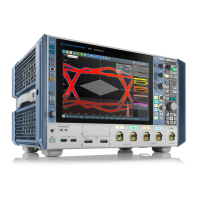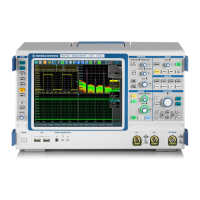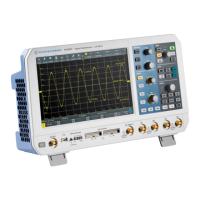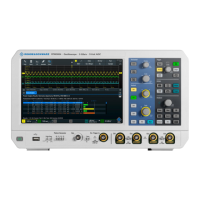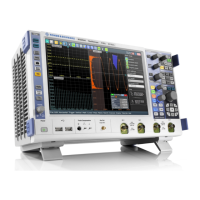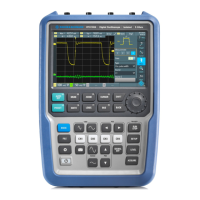Protocol analysis
R&S
®
RTE
543User Manual 1326.1032.02 ─ 20
"CLK timeout"
Defines a timeout on the clock line SCLK as limiter between two
frames. The timeout condition is used for SPI connections without an
SS line. Enter the minimum clock idle time in the field.
Remote command:
BUS<m>:SPI:FRCondition on page 1462
Timeout
Sets the minimum clock idle time if a timeout on the clock line SCLK is used as limiter
between two frames.
See also: "Frame condition" on page 542.
Remote command:
BUS<m>:SPI:TIMeout on page 1462
13.3.2.2 Configuring SPI signals
For configuration, assign the lines to the input channels, and define the active states
and the logical thresholds.
For details on configuration settings, see Chapter 13.3.2, "SPI configuration",
on page 540.
1. Press the [PROTOCOL] key on the front panel.
2. Select the tab of the bus you want to set up, for example "SB1".
3. Tap the "Protocol" button and select the protocol: "SPI".
4. Tap the "SCLK Source" button, and select the waveform of the clock line.
5. Set the polarity (clock mode) for SCLK.
6. For each of the available SS, MISO and MOSI lines, assign the waveform. Define
the polarity (active state) of the line.
7. Set the logical thresholds.
Either according to technology definition with "Preset thresholds", or to an auto-
matic value with "Full autoset"/ "Auto thresholds", or enter a user-defined value
directly in the "Threshold" fields.
8. Set the "Bit order", "Word length", and "Frame condition" according to your signal.
9. Enable "Decode".
13.3.3 SPI trigger
13.3.3.1 SPI trigger
Access: [PROTOCOL] > "Trigger" tab > "Source = Serial Bus"
SPI bus (option R&S
RTE-K1)
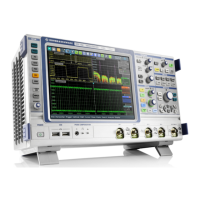
